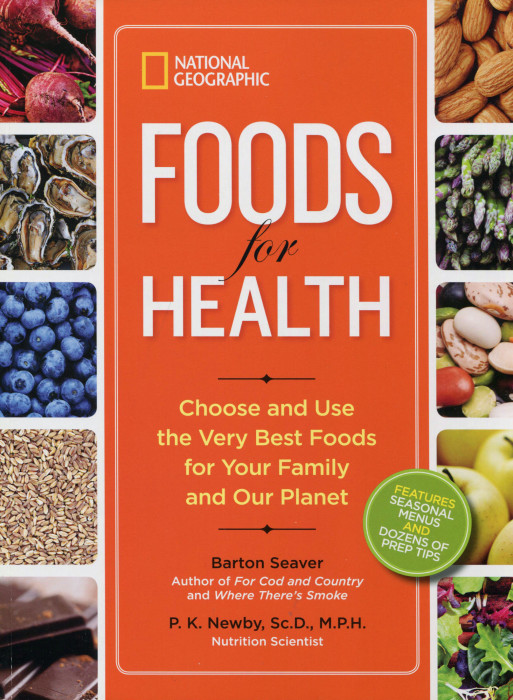Every one of us has surely thumbed through an issue of National Geographic. Or a gaggle of issues. The photos, the maps, the very topics issue a beckoning call. When I had to do a report in grade school, I’d turn to the shelf of Nat Geos sitting on the library shelf. The only problem was how to write something up that was mine and different. Because the writing in the magazine always struck me as direct, pertinent, and pretty close to perfect.
National Geographic has expanded far beyond the magazine. They have a series of books over many topics and this one, Foods for Health, is ideal for anyone who eats food. Which, I think, includes just about all of us.
As an adult, as a foodie, there are questions I cannot ask out loud without embarrassing myself. At this stage of life, with my experience, I think I should know why green beans specifically are good for me, or when the “high season” is, or where they come from. I ought to know that raw green beans are healthier than celery, but I don’t. Well, I didn’t until I read Foods for Health, a reference book that I wish I’d had all along.
As far as the green beans go, they have vitamins C and K, plus manganese and iron. While you can get them year round, the high season is May through October, when you can find beans that snap instead of bending. Fuzzy skin on the bean? That’s good, for that means freshness. And you don’t get the best beans from down South. It is Illinois, Michigan, New York, Oregon, and Wisconsin where the best beans come from. Something called terroir I believe.
There are six chapters in Foods for Health, each dealing with a major segment of the foods we eat, or ought to be eating:
- Vegetables
- Fruits
- Proteins
- Whole Grains
- Fats and Oils
- Beverages
Each chapter has 7 to 20+ entries with each entry, like the one for greens beans, giving you a thorough survey of that food:
- How to choose and use: when to buy, what to look for, how to enjoy for high nutrition
- What are the health benefits: vitamins, minerals and special findings about health impacts
- For our planet: considerations about the impact on fields, farms and people resulting from the cultivation or production of this item.
For vegetables, the usual suspects are here: beets, carrots, corn, those green beans. But you’ll also see information for turnips and fennel and seaweed, items that probably do not rest in your shopping cart on a weekly basis. What are you going to do with turnips? You can make fries with them, basic fries or super fries with cumin or chili powder.
This is a clever book, briskly written and filled with pictures. It’s an inviting read. If you have children or grandchildren in middle school, this would be a brilliant little tome to slip in their back backs. You could reward them for just reading and talking about the “stuff” that is mentioned here. Intrigue them with roasting some pecans, for example, to intensify the flavor, and you may start someone on a food journey that truly makes for a healthier life.
And for you? Well, like me, this book is an fast way to catch up on all that food information that we somehow missed out on. Yeah, you day dreamed in health class, too, and you don't have a clue what a legume is. Read Foods for Health, and you can discover that maybe, just maybe “turnip” is not a four-letter word. Neither, it turns out, is cauliflower.

